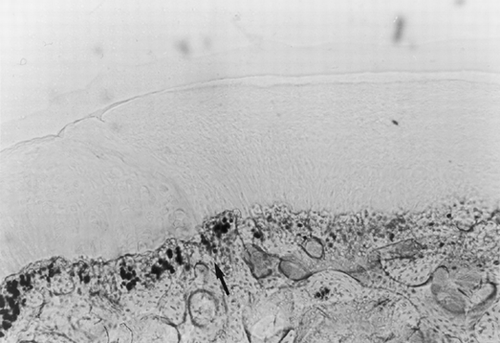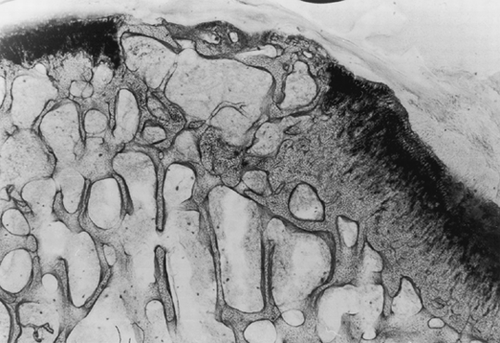Figures & data
Table I. Scoring System for Histologic and Morphometric Results (Maximum = 12 Points). Samples (n.6 per Group) Were Prepared 24 Weeks After Surgery
Figure 1. Osteochondral defect at 24 weeks after laser treatment (toluidine blue). Magnification: ×10. Complete healing of the osteochondral defect surgically created; the arrow shows the border between repaired tissue (right) and adjacent tissue (left). The repaired tissue has an overall good structural integrity with a smooth and regular articular surface.

Table II. Mean Cell Density ± SD of the Lased Specimens. Each Sample Is the Result of the Comparison Between the Cartilage Repaired Using the Laser and the Cartilage Adjacent to the Lesion
Figure 2. Osteochondral defect at 24 weeks after laser treatment (safranin-0 and picrosirius red). Magnification: ×20. Cartilaginous cells appear arranged in a palisade structure; matrix staining of the reconstituted cartilage is more intense for both proteoglycans and collagen in the deepest layers.

Figure 3. Osteochondral defect at 24 weeks without laser treatment (toluidine blue). Magnification: ×2.5. The repaired tissue appears disorganized and reveals an irregular growth of the reconstituted bony tissue, a thin layer of fibrous tissue on the articular surface and the absence of chondrocytes.
